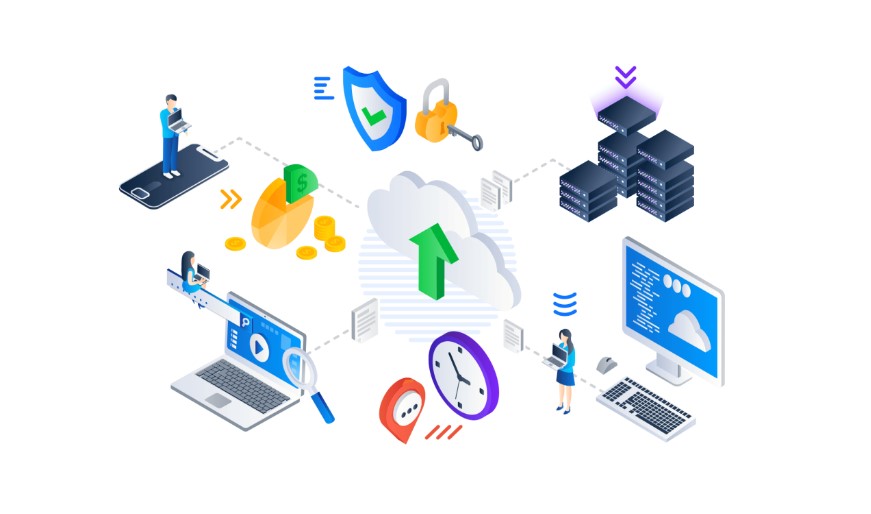Introduction
In the provider-client relationship in cloud computing, Service Level Agreements or SLAs are significant elements. The challenge of SLA management becomes even more pronounced as the uptake of cloud services by organizations continues to rise.
This article aims to discover the widely-accepted approaches to designing, deploying, and managing and enhancing SLAs for cloud services.
Crafting Effective SLAs
A service level agreement is the legal contract of understanding the terms and conditions of the business relationship between the cloud service provider and the customer. Quality SLAs are aimed at establishing clear information on performance indicators, roles, and measures for tackling problems.
Key Components
Every SLA needs to address a few key areas:
- Services to be Provided – Definition of key characteristics of services that will be delivered through a cloud computing system or associated technologies such as computer applications.
- Performance Metrics – Such parameters also include the measures of uptimes, response times, failover times, and many more.
- Specificity of Obligations – Determines the precise responsibility of the provider and customer.
- Remedies for Breaches – specify the recompense for not delivering agreed service levels.
Defining Performance Objectives
- Set Realistic Targets – As much as one may want to make mouth-watering forecasts, it will disappoint the customers and fail to meet the set goals. There should be a consultation with the experts to determine the proper SLOs and what is reasonable or attainable.
- SLOs Should Target a Few Key Areas – SLOs should target only two or three main performance problems, rather than cover many aspects of IT service operation.
- Objective Calculations – When choosing the calculations for SLOs, one should use number-based sources.
SLAs are not defined properly during cloud migrations: An unfortunate revelation by Gartner found that 95 per cent of organizations fail to draft proper SLAs and as a result experience increased outages and costs.
Implementing Monitoring & Management
Once service level agreements have been set, what is required is mechanisms for monitoring and comparing the current service levels across a cloud environment.
Monitoring Tools
- Infrastructure & APP monitoring – Raw usage, availability, utilization, and other important metrics.
- User Experience Monitoring – Helps to determine whether its usage matches real-life user scenarios.
- Response Analytics – Helps in knowing the effect of a large number of users on infrastructure to plan for it.
Management Strategies
- Automate Reporting – Offers the documentation of compliance as well as directing the reviews.
- Analyze Trends - When SLOs are identified as being at risk then, it becomes easy to avoid being breached.
- Review Continually – The SLA besides can be reviewed formally on a quarterly or a semi-annual basis.
- Change Targets and Metrics – Modify agreement goals and KPIs in real-time depending on the technology and business evolution.
As per the industry reports, 75% enterprises are still not equipped with efficient cloud monitoring and management solutions.
Remedies and Enforcement

Thus, a certain level of SLA non-compliance is inherent for cloud providers even if they use best efforts.
Compensations and Credits
Typical remedies for SLA breaches include:
- Service Credit – Specific amount of money having a percentage discount to the monthly bill.
- Financial Layouts – Fine rates for severe disturbances.
- Service Improvements – render a service at a higher level without necessarily charging for the extra service.
Key Principles
- State Clearly When Penalties Take Effect – And up to what level of compensation the penalties would apply.
- Set Realistic Payment Terms – This is important as large fines can lead to hitches in the functioning of the smaller providers.
- Offer Incentives – Provide promotions if there are higher levels of compliance, as well as extend contracts if there is a higher degree of adherence.
Unfortunately, less than 40% of the organizations are steady in receiving the provider penalties or credits that are due to SLA breaches in the cloud.
SLA Best Practices and Examples
Thus, the concept of built-for-success SLAs is possible for both cloud customers and providers by using best practices and real-world case studies.
Best Practices
For Providers:
- Price contracts with realistic SLOs taken into consideration, hence being more conservative in the offered price.
- Again, all may not need compensation but divide them according to priority levels.
- In terms of monitoring, reporting, as well as data analysis, as much as possible must be automated.
For Customers:
- It is useful to compare the SLOs and SLAs from different providers.
- You do not need to select a higher tier of services until it is compulsory.
- Do not over-complicate; complicity facilitates compliance.
Example SLA Metrics
- Service Availability: : 99,95% of operating time.
- Network Delay – the mean monthly delay for North America customers is 60ms.
- Data Durability – A spectacular solution, with an annual durability rate of 0.99% of non-degradation of the data.
- Failover Time - The total recovery time is approx. 6 minutes with the maximum recovery point objective of 26 minutes.
Referring to industry templates and guidelines for constructing SLAs will help organizations to design good SLAs for cloud environments. Reliance on monitoring and management tooling is one of the other key areas where organizations enjoy the benefits of investments made in the long-run. When we set the expectation levels right and ensure that there is a high level of integration between providers and customers, then there is possibility for both sides to grow.
Conclusion
The service level agreements or simply SLAs are very important in outlining and describing the quality of service that is required from the service providers and the customers. SLA management offers volume transparency, which offers an efficient chance to discover service problems and rectify them. The traditional SLAs need to transform as cloud computing advances, and provides new coverage for availability, response time, scalability, data management, and security.




